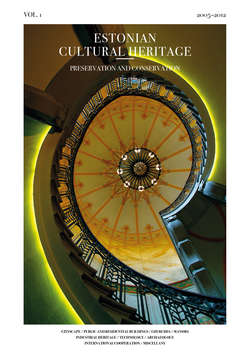Читать книгу Estonian Cultural Heritage. Preservation and Conservation. 2005-2012 - Tallinn Culture And Herit Arts - Страница 7
На сайте Литреса книга снята с продажи.
Epp Lankots, Leele Välja MAPPING AND ANALYSING VALUABLE 20TH - CENTURY ARCHITECTURE IN ESTONIA
ОглавлениеIn 2007 the Ministry of Culture and the National Heritage Board initiated a programme “Mapping and analysing valuable 20th-century architecture in Estonia” in order to survey the most important and still existing sites that represent the 20th century architectural heritage in the whole country. The main idea was to point out the most eminent and valuable of it in order to avoid the situation where valuable buildings are demolished for pragmatic reasons or due to politics of the day without perceiving their eternal values.
The vulnerability of the 20th-century architecture has been an undisguised problem since Estonia restored its independence. So far, it has been mainly expressed by careless rebuilding of houses and replacement of windows. The true trigger that initiated a national survey and informed the general public about the value of recent heritage was the demolition of the only twenty-years-old Sakala Centre (former House of Political Education) that symbolised outstandingly the times it was built. This sort of recklessness has its own background. The 20th-century architecture, especially from the second half of the century, is new for heritage: common people perceive it as ordinary, not as an historical structure. In addition to that, the assessment of the post-WW II i.e. the Soviet time architecture is complicated because of ideological and personal reasons.
The programme focused on the period from 1870 to 1991. Why this period? Since the general influence of industrial and technological development to the 20th-century manmade environment and the specific changes and qualities in the architecture and urban development characteristic of the last century appeared already before the turn of the century the year 1870 as an initial date was chosen. This was the year of the establishment of the railway system that influenced substantially the development of Estonia. The year 1991 marks the end of one era: the environment created during the period of the restoration of independence in Estonia is too young for evaluating it from the heritage point of view.
